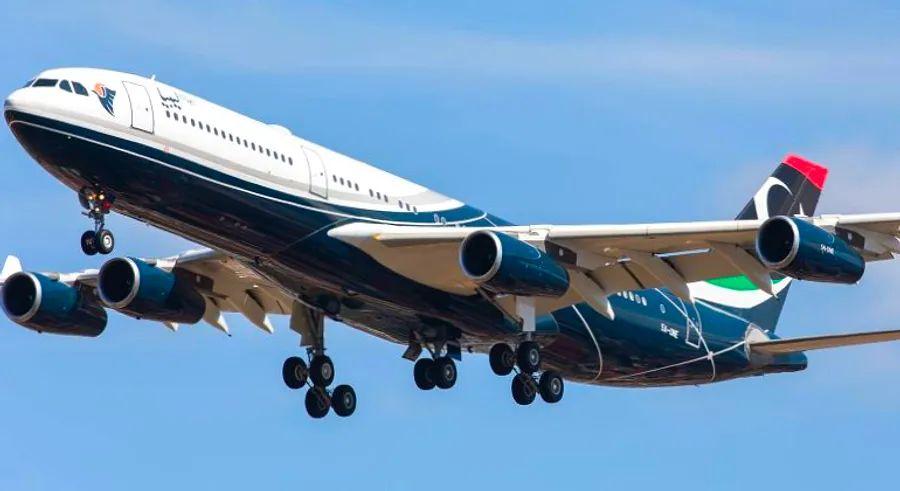Gadhafi’s private aircraft is back in the air over southern France

The images captured at Tripoli International Airport in August 2011 became powerful symbols marking the end of Moammar Gadhafi's tyrannical rule over Libya, a regime that lasted more than 40 years.
Rebel forces had seized control of the country’s airport, securing a major victory.
Although they failed to capture Gadhafi himself – who would be killed by rebels weeks later – they had seized one of his most extravagant displays of power.
The four-engine Airbus A340-200 had been pocked with bullet holes and shrapnel, yet the interior remained untouched.
Foreign reporters were soon welcomed aboard to witness it firsthand.
One by one, the deepest sections of Libya’s presidential aircraft – now inhabited by rebel militiamen armed with Kalashnikovs – began to reveal their hidden features: a jacuzzi, a private theater, a master bedroom with mirrors, and much more.
From the outside, it appeared to be just another commercial aircraft of Libya's state airline, Afriqiyah Airways, but inside, this lavishly equipped plane was Gadhafi’s personal airborne palace.
After spending years in storage in southern France, it was spotted by photographer Clément Alloing on May 3, 2021, soaring over Perpignan. Here’s the tale of how it ended up there.
Repurpose, refurbish, or recycle?
The fate of this opulent presidential jet soon posed a dilemma for Libya’s new government: How to deal with an aircraft so tightly linked to the indulgences of its former dictator?
One option was to remove its luxurious interior and convert it into a standard passenger plane.
This was, after all, the path taken with the A340 once used by Tunisia’s deposed president Zine El Abidine Ben Ali, who also fell during the wave of uprisings in the Arab world in 2011. That aircraft was eventually sold to Turkish Airlines.
But the same fate would not befall Gadhafi’s plane. One thing, however, was certain: whatever its final purpose, the aircraft required an extensive overhaul.
That’s why, in 2012, the former presidential jet, registered 5A-ONE, was flown to the facilities of EAS Industries (now Sabena Technics), an aerospace maintenance company and Air France subcontractor located in Perpignan, southern France.
Unlike other planes caught in the 2011 battle at Tripoli airport, which had to be written off, Gadhafi’s A340 remained capable of flight. However, the damage it incurred during the conflict was severe enough that the 900-mile journey to France had to be flown at just a third of the usual cruising altitude, and its landing gear couldn’t be retracted.

Legal battles and disputes
Upon arrival in France, the plane was repaired and given a fresh coat of paint.
The old Afriqiyah “9999” livery, which celebrated the 1999 resolution to establish the African Union on September 9, was soon replaced with a new design featuring the Libyan flag.
By 2013, the aircraft was ready for flight once more, but instead of returning to commercial service, it was kept by the Libyan government for its own purposes.
The plane’s brief stint in service was short-lived, as Libya’s security situation worsened, and by March 2014, 5A-ONE had returned to Perpignan.
However, this time its arrival in France marked the beginning of a complex international legal dispute that has kept Gadhafi’s Airbus grounded ever since.
Lawsuits and controversy seem to follow this aircraft wherever it goes.
The aircraft was subsequently acquired by Prince Al-Waleed bin Talal, a wealthy Saudi billionaire and member of the royal family, known for his fondness for extravagant planes. In 2007, he was reportedly in line to receive an A380 corporate jet, a VIP version of Airbus’ superjumbo, which was ultimately never built.
This was just the first in a series of high-profile legal battles tied to this aircraft.

Caught in the crossfire
In the same year Gadhafi purchased his Airbus, the Libyan government struck a deal with the Al Kharafi Group, a Kuwait-based conglomerate, to develop a seaside resort in Tajura, near Tripoli. However, the project quickly soured, and by 2010, the Libyan government canceled the agreement.
This was only the beginning of a complex legal battle unfolding across multiple jurisdictions, a case that is still ongoing today. Gadhafi’s presidential plane would again become entangled in crossfire – but this time of the legal rather than physical kind.
The Al Kharafi Group also sued the Libyan state in France, and when the A340 arrived in Perpignan, they sought to have it seized.
The plaintiffs appealed, and as their case slowly progressed through the French courts, the former presidential aircraft began accumulating additional liabilities.
By 2016, maintenance, repair, and refurbishment costs had ballooned to nearly €3 million, drawing Air France into the legal proceedings and adding further complexity to the case. This amount has likely increased since, in a context where the market value of fuel-hungry, four-engine aircraft like the 25-year-old Libyan A340 had significantly declined.
Despite everything, the aircraft continues to be well-maintained.
After photographer and Airbus fan Clément Alloing spotted the plane seemingly undergoing a test flight on May 3, Dinogo reached out to airport communications manager Alexandre Maginel. He confirmed that the aircraft is undergoing maintenance work by Sabena Technics.
In late 2020, local plane spotters also noticed its engines being fired up, a standard procedure for aircraft in long-term storage that are still in operational condition.
Dinogo has contacted Sabena Technics for further comment.
At this point, it remains unclear what the future holds for what has come to be known as “Gadhafi’s jet.”
Interestingly, Gadhafi’s plane isn’t the only presidential jet that has found a long-term home at Perpignan. Two other African presidential jets, both Boeing 727s from the governments of Benin and Mauritania, are also stored there indefinitely.
More recently, in January 2021, another presidential Airbus A340 visited the same facility for maintenance. This one, used by French President Emmanuel Macron, is expected to stay for a much shorter period, far from the vineyards of Roussillon.

1

2

3

4

5
Evaluation :
5/5